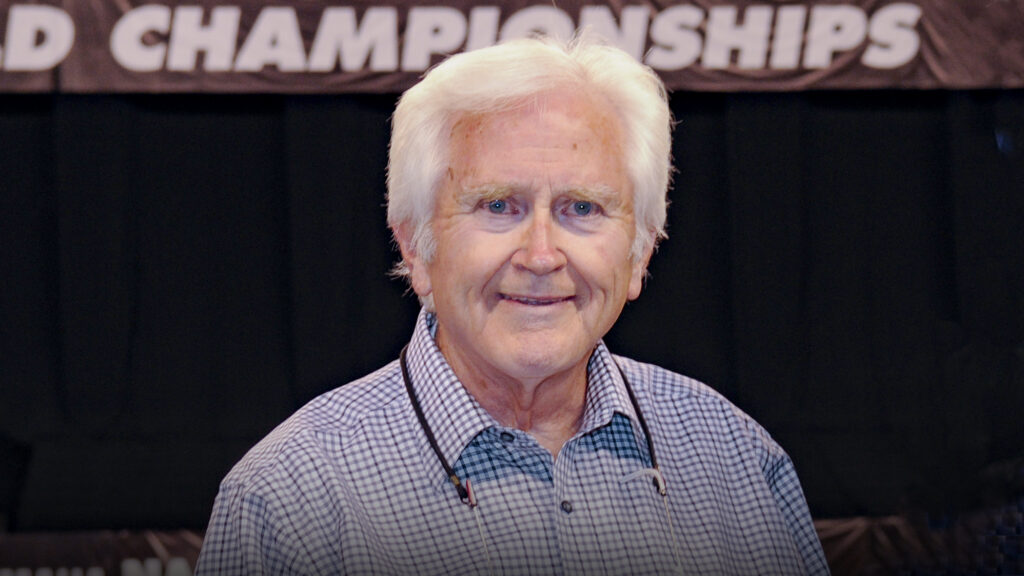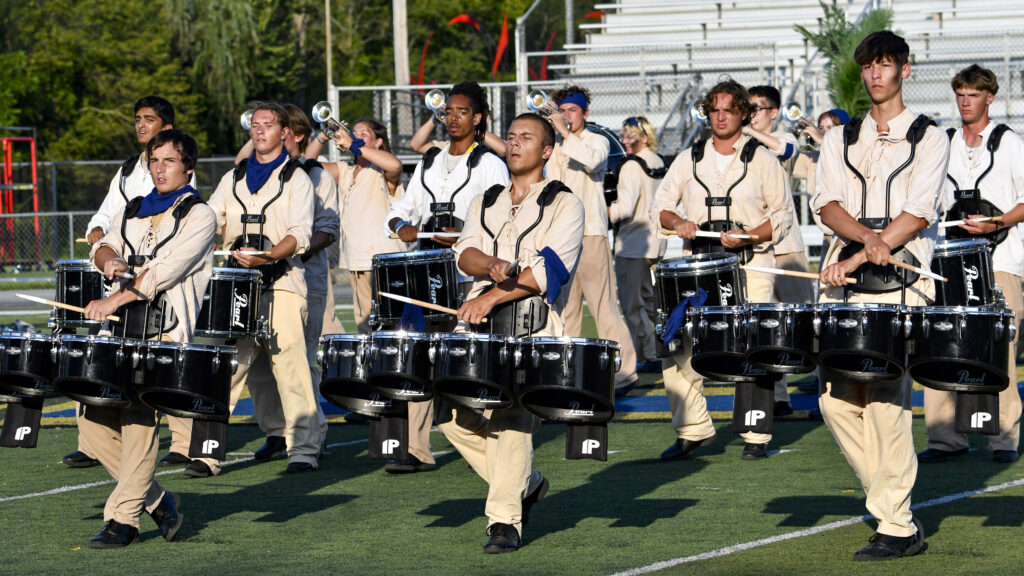A year ago, a previous Fanfare column titled “Memorable Instructors” (May 30, 2003) discussed a number of teachers of drum corps who were influential in the evolution of the activity. Since then, a number of readers have sent in further recollections about instructors, mostly instructors from the East. Jonathan Chang is a band director at Glen A. Wilson High School in Hacienda Heights, Calif. He played baritone for Blue Knights in 1989, when George Zingali was the drill writer and an instructor. He also went on to serve as a baritone tech for Pacific Crest (1993-1998) and Troopers (2001-2002). “I truly believe that the 1989 Blue Knights was like no other Blue Knights corps, and the influence of George Zingali made it special. After talking to others who marched in the Cadets, I know my experience wasn’t like theirs. George said he had made a connection with us that he had made only a couple times before with Garfield. “He wasn’t with us on tour all the time … just a few weeks before Drums Along the Rockies and a week before the DCI World Championships. One time, he sat us down and talked to us about performing — not our show, but performing in general. Then he told us about the show and what it really meant, which was another thing he rarely did. (I’m not talking about, “This piece of music is expressed through this visual component,” but more like, “This part of the show is about this part of life …”) “Also, what I got out of what he said was that [the show didn’t depend on] something that was technical, but on something that you do to express yourself. He took us completely outside of competing to win and put it all on simply performing the best we knew how. That is a philosophy I have adopted and I use to this day. It was amazing because while we were not even close to making Finals that year, we thought we could and when we had our best performance at World Championship semifinals, it didn’t matter when we found out we didn’t make the top 12. I wasn’t fazed by it and I was amazed that others weren’t, either. I can’t recall one person who was truly disappointed. “The year after I marched (1990) I went to my one and only winter camp as a visual tech. We had a staff meeting and the caption heads were relatively young and sitting amongst one of the greatest design teams you’ll ever gather, including George Zingali, Ralph Hardimon and Jim Prime. Stanley Knaub was part of the team, but I do not recall him being there. “The topic came to what our goal was to be. The young guys were thinking and saying, “To make top 12, of course!” George said something to the effect of, “Well, you’re going to have to really work your butts off because I don’t think we’re going to get into the top 12.” The young guys just looked at each other and were wondering how George could say this. Then he went down the line, “This corps will be in … and this corps … and this corps … and Dutch Boy will make it in 12th place and we will end up in 13th place.” “Now, can you imagine what happened that year? Quarterfinals — Blue Knights in 12th and Dutch Boy in 13th. Semifinals — Dutch Boy in 12th and Blue Knights in 13th. In some ways, I think of George as not being human and I just chuckle and wonder in amazement how he could have made that call back in February. “Had it not been for the positive and enlightening experience that I had under George Zingali, my life would not be the same. I really miss George and wish I had gotten to know him better.” Mike Davis marched with the Garfield Cadets 1970 to 1972. He wrote the following. “Loved reading your article on DCI.org, but you are forgetting Bobby Hoffman and Pete Emmons’ original corps that led to their later success — the Garfield Cadets. “Bobby was our main “drill guy” all three years I marched there, 1970-1972. (I’m not sure if he stayed on after that.) Bobby, along with our “guard guy,” Pete Emmons, created the “peace sign” drill for us in 1970 (to Jefferson Airplane’s “White Rabbit”) that nearly got us kicked out of VFW Nationals finals. He was a rebel even then! “We ended up as part of the 1971 trio of themed shows that was referred to as “the day drum corps died,” along with the Cavaliers [The “circus” show] and Madison Scouts [Alice in Wonderland]. We did an entire Revolutionary War show in 1971, coming in 6th at the World Open and 7th at VFW Nationals in Dallas. “Bobby and Pete reprised the peace sign, this time to the politically correct “Battle Hymn.” We also were probably the first corps to hand out printed librettos describing our show, “1776.” That year we also had a dance sequence in the show, and at one point Bobby split the corps into two halves; one half (the lower brass) did a minuet to represent the Hessians while the sopranos did a hoedown as the Americans. “In 1972, we had a very new staff, and missed the first DCI World Championship Finals by just one tenth. However, Bobby again did another avant-garde drill for us, as we had no concert number or real patriotic color presentation. He, along with Pete Emmons, continued our peace sign tradition, this time to a theme from Mahler’s 5th symphony. We kept up the idea of a themed show, this time generically named “No More War.” In fact, another of your greats from the 1970s was on our staff that year — our percussion was taught by Fred Sanford in 1972. “By the way, I think Bobby also did the Skyliners’ drill sometime in the early 1970s. Seems like an odd combination!” Tom Gallo is another Garfield Cadet from that era, having marched in the corps from 1960 through 1971. “I would like to point out a few other names out of the past, one in particular that was featured in one of your past articles. I marched in the snare line of the Garfield Cadets in 1969-1971 and had the privilege of watching John Sasso and Frank Dorittie transform the once military-sounding horn line into a well-balanced, almost symphonic entity. I also would have to mention the drum major of 1969 and 1970, Richard Chirichella. He was the consummate Cadet as far as leadership on and off the field was concerned. No matter what place we took at a show, he led us as if we had won. “The sad thing about this is that Richie died at the age of 21 shortly after the 1971 season had ended. And as far as I was concerned, there had never been a finer human being in uniform. “In the earlier years I marched, John and Frank wrote the music, but by 1971, Frank wrote the horn book himself. “Does anyone remember the peace sign during “White Rabbit” in 1970. [Referred to above.]? How about [the drill form] “1776” in the 1971 show, based on the Broadway musical of the same name? That show was to become what I consider a milestone in drum corps history, complete with a British side of the corps and a colonial side. Then there was the battle scene with the horn line recreating the two lines of fire; one where the front kneels and fires and the back line stood and fired while the drum line played a frenzy of notes completing the sounds of the battle. This was all culminated in the peace sign, which brought the crowd to their feet every show. “Through the vision of Frank and the other instructors, (including George Tuthill and Fred Sanford, who cowrote the percussion book), the total show concept was born. That year was a turning point and a total departure from the traditional Cadet style of marching. “Do you remember Blue Rock’s eight-man snare line in 1971? Where are the names of these innovators? Are we so wrapped in the present that we forgot to tell the members of today of how they got to this point? I agree with your list of modern day innovators but let’s not forget
DCI Hall of Famer Gerry Shellmer of Boston or Bobby Thompson of Blessed Sacrament. These men — along with their contemporaries — were the true pioneers of this incredible journey called drum corps and it would be a shame not to mention them at least once in this conversation. I consider it a privilege to have been a member of the Garfield Cadets in a time of innovation that still impacts the drum corps world today. I would like to thank all of the instructional staff, past and present, for continuing to see the activity as a means of nurturing the creative spirit and producing (through the rigors and discipline of competition) better human beings for the world of tomorrow.
Michael Boo has been involved with drum and bugle corps since 1975, when he marched his first of three seasons with the Cavaliers.
He has a bachelor’s degree in music education and a master’s degree in music theory and composition.
He has written about the drum corps activity for over a quarter century for publications such as Drum Corps World, and presently is involved in a variety of projects for Drum Corps International, including souvenir program books, CD liner notes, DCI Update and Web articles, and other endeavors. Michael currently writes music for a variety of idioms, is a church handbell and vocal choir director, an assistant director of a community band, and a licensed Realtor in the state of Indiana. His other writing projects are for numerous publications, and he has published an honors-winning book on the history of figure skating. His hobbies include TaeKwonDo and hiking the Indiana Dunes. But more than anything, Michael is proud to love drum corps and to be a part of the activity in some small way, chronicling various facets of each season for the enjoyment of others.





